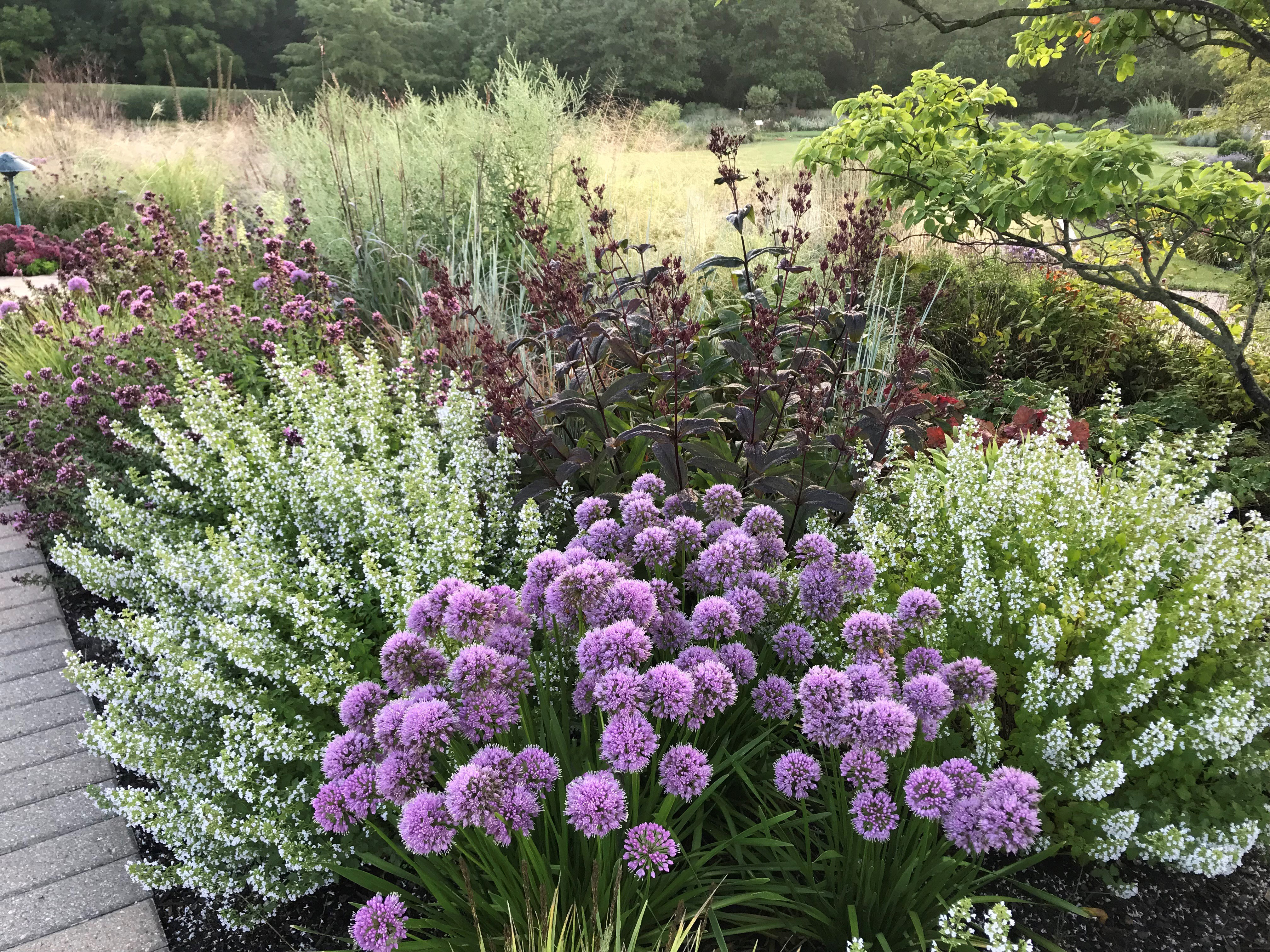2021 Perennial Plant of the Year
CALAMINTHA NEPETA SUBSP. NEPETA

Calamint, Lesser CalamintPhoto credit: Stonehouse NurseryLike a cloud of confetti, tiny white flowers (sometimes touched with pale blue) appear from early summer to fall. Undemanding and dependable, calamint provides the perfect foil for other summer bloomers and foliage. This full-sun perennial has a low mounding or bushy habit, ideal for the front of the border, rock gardens, and more.
While durable and pest-free, calamint also checks two important boxes for gardeners: bees and other pollinators work the flowers throughout the summer and the aromatic foliage is deer-resistant.
Calamintha nepeta subsp. nepeta is a favorite low-growing component in stylized meadows, matrix plantings, and other modern perennial designs. Gardeners can also create a lovely monochromatic garden with more sure-thing perennials including past PPOYs such as Anemone xhybrida ‘Honorine Jobert’ and Phlox paniculata ‘David’, or complemented with ornamental grasses such as Panicum virgatum ‘Northwind’ (switchgrass) or Schyzacharium scoparium (little bluestem).

Photo credit: Midwest Groundcovers
Hardiness: USDA Zones 5 to 7
Light: Full sun
Size: Up to 18 inches tall and wide
Native Range: Great Britain to Southern Europe (Griffiths, M. 1994. Index of Garden Plants, Timber Press: Portland, OR)
Soil: Best with good drainage - tolerates some drought once established.
Maintenance: Low-maintenance deciduous perennial. Can shear back lightly if desired to create neater habit or refresh spent blooming stems. Tolerates drought once established.
Nomenclature: What's with the "subspecies"? Abbreviated subsp. or spp., this is a naturally-occuring, phenotypic variation to a species that is usually related to a geographic situation. This subspecies was selected for size and vigor. May also be found under the following synonyms: Calamintha nepatoides and Clinopodium nepeta.
Grower Notes: Calamintha nepeta subps. nepeta has no patents or other restrictions. Propagate by vegetative cuttings (stem or root). Vernalization not required. Spring planting yields a one-gallon in 8-10 weeks. Grow on the dry side. Smaller pot sizes not recommended. Pinch or shear if needed to shape; responds to plant growth regulators.
